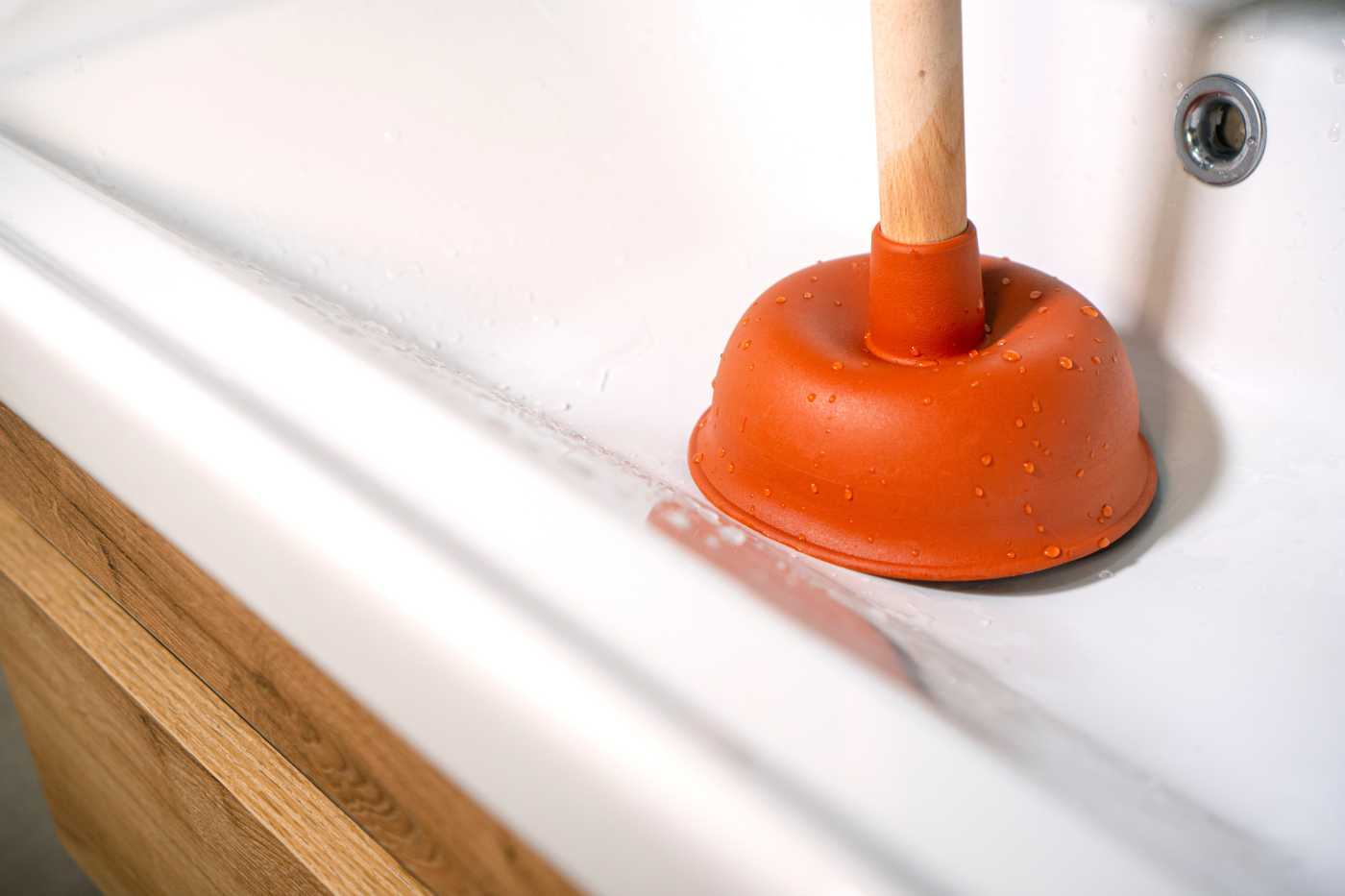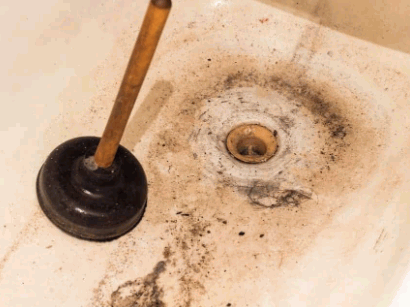The article author is making a number of great observations on the subject of How to Use a Plunger to Unclog a Toilet or Drain as a whole in this great article below.

Intro
Appropriate maintenance of household drains pipes is necessary for stopping blockages and ensuring smooth water flow. One of the trick devices in every home owner's toolkit is the bettor, alongside numerous drain cleaners made to tackle stubborn clogs successfully. This post explores exactly how to use plungers and drain cleaners efficiently to keep your drains flowing freely.
Area 1: Recognizing Bettors
Sorts of Plungers
There are a number of kinds of plungers available, each made for various kinds of drains and obstructs. One of the most common kinds consist of cup bettors, flange plungers, and accordion bettors.
Exactly How Plungers Work
Bettors deal with the concept of producing pressure and suction to remove clogs. When appropriately applied over a drainpipe, they create a vacuum cleaner that can take out debris or separate blockages.
Picking the Right Bettor
Picking the best bettor depends on the kind of drainpipe and the nature of the clog. Cup bettors are ideal for sinks and bathtubs, while flange bettors are better fit for toilets due to their layout.
Typical Mistakes with Plungers
Staying clear of these mistakes makes sure effective plunging: inappropriate seal around the drain, insufficient force, and unclear bordering debris.
Area 2: Utilizing Plungers Properly
Preparation
Prior to diving, make sure the bettor covers the drainpipe entirely and creates a tight seal. Clear any type of visible particles around the drainpipe opening.
Technique
Start with mild plunging motions to construct suction. Boost pressure progressively, utilizing a stable rhythm. Repeat as necessary till the drain gets rid of.
Fixing Tips
If diving doesn't function, try readjusting the seal, applying oil jelly for a better seal, or making use of a different kind of bettor.
Section 3: Comprehending Drain Cleansers
Sorts Of Drain Cleansers
Drain pipes cleansers can be chemical or enzymatic. Chemical cleaners make use of strong chemicals to liquify obstructions, while enzymatic cleansers make use of all-natural enzymes to break down organic matter.
Exactly How Drain Cleaners Job
Chemical cleansers react with blockages to dissolve them, while chemical cleansers break down organic products like hair and grease without hurting pipelines.
Security Considerations
Always put on gloves and eye defense when utilizing chemical drainpipe cleaners. Ensure adequate ventilation and follow producer directions carefully.
Eco-Friendly Alternatives
Think about utilizing vinegar and cooking soft drink or enzyme-based cleansers for eco-friendly options that are safer for pipes and the environment.
Area 4: Making Use Of Drainpipe Cleaning Company Properly
Application Methods
Put chemical cleaners directly right into the drainpipe opening. Enable them to work for the recommended time prior to purging with hot water. Chemical cleansers ought to sit over night.
Safety measures
Avoid blending different types of cleansers, as this can produce poisonous fumes. Never ever use chemical cleansers along with a plunger, as spilling can occur.
Managing Persistent Blockages
For consistent blockages, consider using a pipes serpent or calling an expert plumbing technician to avoid damage to pipelines.
Final thought
To conclude, understanding just how to make use of plungers and drain cleansers efficiently is vital for maintaining healthy and balanced plumbing systems. By picking the right devices and strategies, home owners can tackle minor blockages and avoid major pipes concerns down the line.
How to Use a Plunger to Unclog a Drain
The humble plunger is a simple yet effective tool for breaking clogs in sinks, tubs and toilets. This handy tool is easy to use. You can make the most of its power if you understand how it works. Ready to dive in? Here’s what you need to know.
Safety First!
Never use a plunger with drain chemicals. Water will splash as you work, and the chemicals can spatter, burning skin and eyes. It’s a good idea to use rubber gloves and wear safety goggles when you work on a clog.
Choose the Right Tool for the Job
Plungers come in two different styles. Sinks, bathtubs and showers require a cup plunger. Like its name suggests, the rubber end is shaped like a cup. Use a flange plunger on toilets. These plungers have a rubber funnel extending from the cup. A plunger needs to be big enough to cover the drain.
Ready, Set, Plunge!
Coat the rim: Coat the plunger rim with petroleum jelly. This helps make a better seal.
Block outlets: Hold a wet rag over nearby outlets such as the overflow vent or the drain in a second sink.
Release air: Insert the plunger at an angle into the water. Water will displace air in the cup. A water-filled cup is more forceful than one filled with air.
Keep the plunger upright: Hold the plunger perpendicular to the drain. Use fast, forceful strokes, but make the first stroke gentle. The first stroke can create a splash if the cup still contains air. Thrust the plunger 15 to 20 times.
Snap off the plunger: The final stroke should be a strong upward motion that ends when the plunger snaps off the drain.
Repeat the process: you may need to repeat this sequence several times. When the water drains away, your work is done. High-five! https://plumbernw.com/blog/how-to-use-a-plunger-to-unclog-a-drain/

Application Methods
Put chemical cleaners directly right into the drainpipe opening. Enable them to work for the recommended time prior to purging with hot water. Chemical cleansers ought to sit over night.
Safety measures
Avoid blending different types of cleansers, as this can produce poisonous fumes. Never ever use chemical cleansers along with a plunger, as spilling can occur.
Managing Persistent Blockages
For consistent blockages, consider using a pipes serpent or calling an expert plumbing technician to avoid damage to pipelines.
Final thought
To conclude, understanding just how to make use of plungers and drain cleansers efficiently is vital for maintaining healthy and balanced plumbing systems. By picking the right devices and strategies, home owners can tackle minor blockages and avoid major pipes concerns down the line.
How to Use a Plunger to Unclog a Drain
The humble plunger is a simple yet effective tool for breaking clogs in sinks, tubs and toilets. This handy tool is easy to use. You can make the most of its power if you understand how it works. Ready to dive in? Here’s what you need to know.
Safety First!
Never use a plunger with drain chemicals. Water will splash as you work, and the chemicals can spatter, burning skin and eyes. It’s a good idea to use rubber gloves and wear safety goggles when you work on a clog.
Choose the Right Tool for the Job
Plungers come in two different styles. Sinks, bathtubs and showers require a cup plunger. Like its name suggests, the rubber end is shaped like a cup. Use a flange plunger on toilets. These plungers have a rubber funnel extending from the cup. A plunger needs to be big enough to cover the drain.
Ready, Set, Plunge!
Coat the rim: Coat the plunger rim with petroleum jelly. This helps make a better seal. Block outlets: Hold a wet rag over nearby outlets such as the overflow vent or the drain in a second sink. Release air: Insert the plunger at an angle into the water. Water will displace air in the cup. A water-filled cup is more forceful than one filled with air. Keep the plunger upright: Hold the plunger perpendicular to the drain. Use fast, forceful strokes, but make the first stroke gentle. The first stroke can create a splash if the cup still contains air. Thrust the plunger 15 to 20 times. Snap off the plunger: The final stroke should be a strong upward motion that ends when the plunger snaps off the drain. Repeat the process: you may need to repeat this sequence several times. When the water drains away, your work is done. High-five! https://plumbernw.com/blog/how-to-use-a-plunger-to-unclog-a-drain/

We had been made aware of that editorial about How To Use Your Toilet Plunger Correctly in 5 Easy Steps through a friend on our other web property. Be sure to take the time to distribute this entry if you liked it. We truly appreciate your readership.
Schedule A Free Estimate